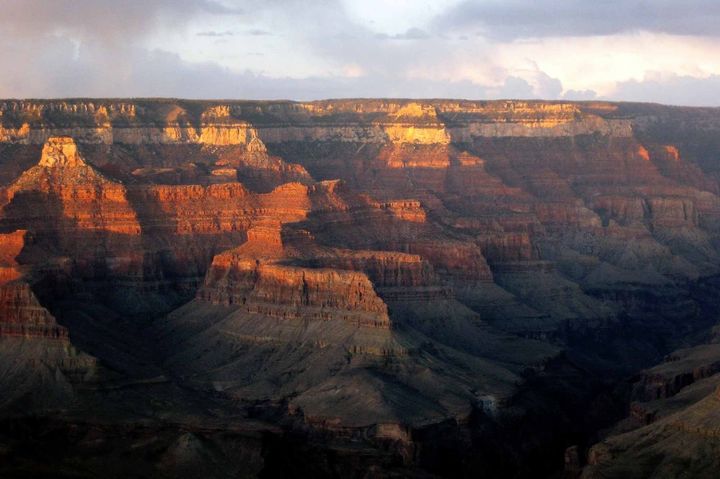
Just how the Grand Canyon was formed has been hotly debated by scientists and tourists alike almost since its discovery.
But new evidence has potentially shed light on the gigantic canyon's origins, according to LiveScience. The finding of a large anomalous structure beneath the Colorado Plateau suggests that at one point it rose up about 1.2 miles, was invaded by magma, and then eroded away into deep valleys, producing the canyon we know today.
However, while this behavior is commonly found in mountain belts, it's unusual to see on the relatively flat Colorado Plateau, according to LiveScience.
Previously scientists largely attributed the canyon's formation to the Colorado River, which was thought to have slowly cut through the layers of rock over millennia, according to Discovery. This new data suggests a more recent time of formation than other theories have posed -- in the last 6 to 7 million years.
"Anyone who goes to the Grand Canyon and looks down should think, 'What is it that made it this way?' The most immediate answer is water, that a river cut this canyon, but what is it that made the rock it lies in, the earth, move up?" Alan Levander, a structural seismologist at Rice University, told LiveScience.
In the lithosphere under the Grand Canyon and much of the western half of the Colorado Plateau, scientists discovered an anomalously cold, dense region more than 120 miles (200 km) deep sinking into the Earth. This anomaly is apparently pulling off the lower part of the crust above it, activity that might lead to a major part of the unusual geological history in and around the Grand Canyon.
The next step in researching the canyon's creation will be to appropriately image the anomaly using more seismology stations. Better imaging may lead to a better understanding of what caused magma to rise.